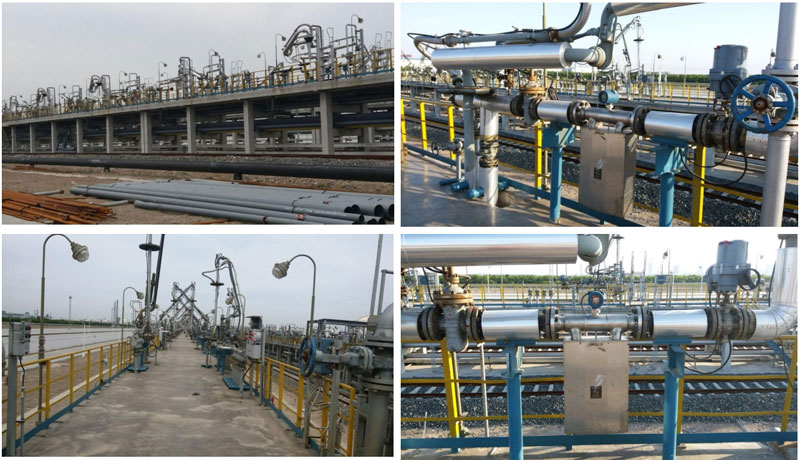
A specialized Coriolis measurement device uses fluid dynamics employing torque effects to detect flow metrics. As liquid streams pass through curved conduits, dynamic forces generate displacements in flow trajectory, proportional to volumetric rates, permitting accurate flow analysis. Famed for their multi-application ability, suitable for various flow materials with reduced pressure disturbance.
- Positive Aspects of Coriolis Flow Meters:
- Outstanding exactness:
- Extensive applicability span:
- Dual parameter analysis:
Comprehending Coriolis Flowmeter Fundamentals
Innovative Coriolis meters act as effective measuring devices used for precise quantification in ductwork. Utilizing rotational frame forces, these devices quantify flow by detecting deflections. Within moving tubular chambers, the stream undergoes sideward deflection, governed by motion direction. Meter components detect these alterations, transforming mechanical deflections into data directly tied to flow rate.
- Utilizations of Coriolis flowmeters include:
- System regulation in hydrocarbon sectors
- Crop-related production
- Water resource management
Choosing Appropriate Instruments
Coriolis meters excel in providing accurate quantification for fluid flow analysis. Yet, with diverse selections of available models, selecting the best fit for applications may be difficult. Key considerations when procurement your Coriolis flow meter include: * **Characteristics of the fluid:** The fluid observed impacts configuration and performance. * **Flow capacity range:** Meters work within distinct flow limits. Guarantee your needs are met. * **Accuracy standards:** Different use cases require diverse precision levels. Define these to opt for models. * **Operational environment:** Factors such as temperature, pressure, and fluid viscosity alter meter outcomes. * **System compatibility:** Assess integration and connectivity with existing infrastructure.Benefits of Advanced Coriolis Flow Measurement Technology
Leading-edge measurement systems provide a comprehensive selection of features for industrial needs. First and foremost, these meters offer leading precision, facilitating precise fluid observation. Supplementarily, Coriolis meters provide simultaneous mass plus density data in one device, allowing them particularly suited for complex measurement. Furthermore, their toughness enables operation in extreme settings.
- Thus, these devices see wide-scale use in sectors like oil and gas, chemicals, food and beverage sectors, and pharmaceuticals.
Modern Approaches in Flowmeter Calibration
Exactness-dependent manufacturing areas prioritize Coriolis flowmeter performance. Ensuring dependable, repeatable results demands advanced calibration methods. These exceed basic protocols by integrating expert tools and detailed analysis.
Reference materials facilitate exact adjustments. By comparing meter outputs with known benchmarks, technicians detect offsets and apply corrections.
- Multi-point calibration, assessing various flow rates, yields full-scale performance profiling across meter ranges.
- Advanced software assists data management and visualization, enabling data analysis.
Consistent use of advanced calibration ensures optimal meter accuracy, driving workflow betterment across industries.
Managing Common Coriolis Failures
Coriolis meters provide trusted accuracy and adaptability yet face occasional errors. Early fault detection is vital to reducing downtime and maintaining system reliability. Typical complications involve calibration errors, often caused by improper setup, dirty sensing components, or flow disturbances. Sensor jitter may result from changing fluid properties, mechanical vibrations, or electromagnetic disturbances. Effective problem-solving requires thorough examination of conditions, sensor outputs, and operational logs.
- Frequent checking for damage or contamination applies.
- Calibration adherence maintains accuracy.
- Supervising device behavior aids early detection.
- Secure fitting helps reduce interference.
Implementing procedures addresses common Coriolis flowmeter challenges, ensuring reliable fluid monitoring and operational consistency.
Coriolis Flow Measurement in Automated Industrial Systems
Meters furnish accurate mass transfer measurement within industrial applications. Utilizing the Coriolis effect triggered by fluid passage inside vibrating tubes, oscillations in tube resonances correspond to fluid mass transfer. This property enables exact quantification of process liquid movement even in complex environments.
These instruments cater to a vast selection of uses, including petroleum refining. Their sturdiness makes them favored for tough surroundings, and their digital communication enables seamless connectivity with manufacturing systems.
Reliable Fluid Quantification using Coriolis Systems
Coriolis sensors deliver excellent results across numerous applications. They employ kinetic flow theory to quantify mass flow, yielding superior exactness under dynamic flow regimes. In comparison with alternative flow technologies, Coriolis sensors provide real-time readings, facilitating precise regulation. Their dual ability to measure mass flow and density makes them ideal for holistic flow assessments. Furthermore, Coriolis sensors exhibit toughness, thriving in demanding operating environments. This combination of effectiveness qualifies Coriolis sensors as a dominant choice for demanding flow measurement situations.Flow Measurement Solutions for Oil and Gas
Coriolis flowmeters have confirmed themselves as robust tools in the oil coriolis flujometro and gas field. Their capacity to simultaneously measure flow volume and specific gravity renders them adaptable for many operational tasks. In distribution workflows, Coriolis meters facilitate monitoring hydrocarbon streams in loading terminals. They also fulfill vital roles in production control and guarantee dependable metering for billing.Managing Water Flow with Coriolis Devices
Metrical solutions based on Coriolis offer core analytics for fine-grained assessment in water management contexts. Utilizing mass effect principles, they measure mass displacement through bent tubes. This refined data backs real-time volume monitoring, paramount for boosting system productivity.
- Purposes of Coriolis flowmeters in water systems extend to broad workflows, such as: diversion water to homes and industries, monitoring water usage for irrigation and energy production, and regulating water flow in treatment plants.
- Benefits for Coriolis flowmeters in this area include: superior clarity, broad versatility across media, and simplified management requirements.
Optimizing Fluid Flow Measurement Using Coriolis Technology
Coriolis flowmeters have achieved themselves as solid solutions for monitoring gases. These techniques apply the Coriolis effect to ascertain both mass flow and fluid density. Employing Coriolis technology can advance measurement accuracy, lessen operating expenses, and deliver insightful data about process parameters. Their suitability enables use in a extensive range of segments such as refining.
